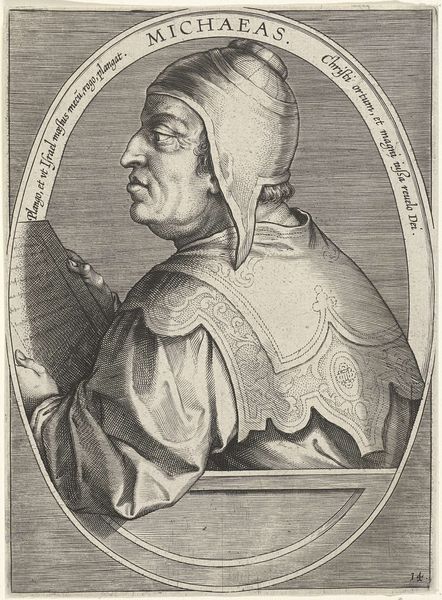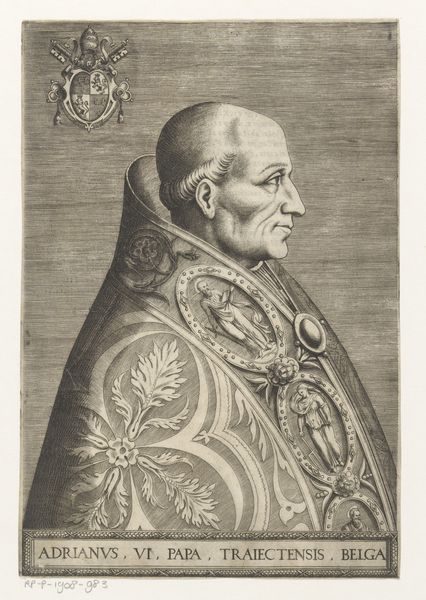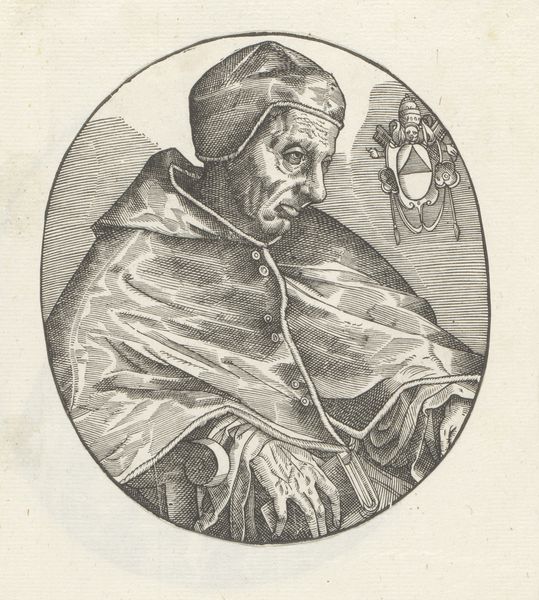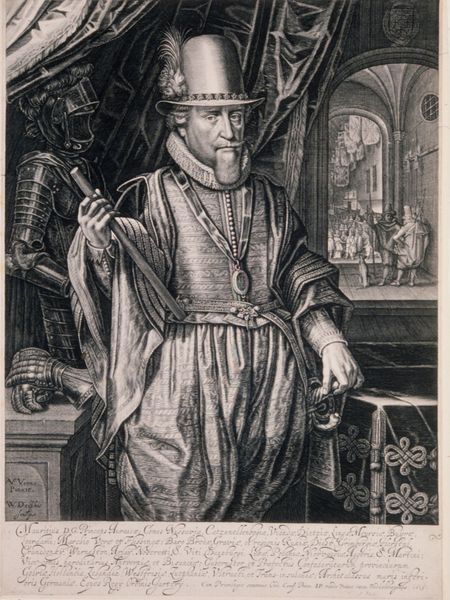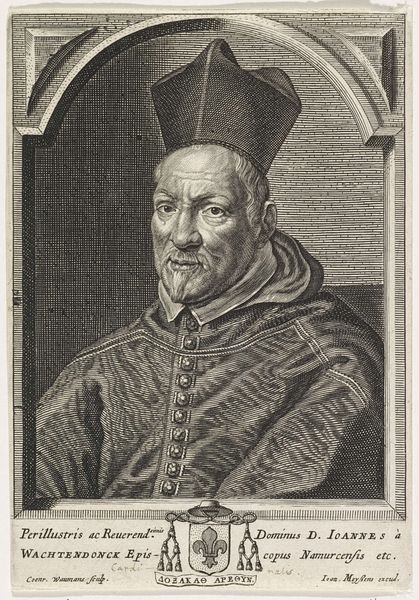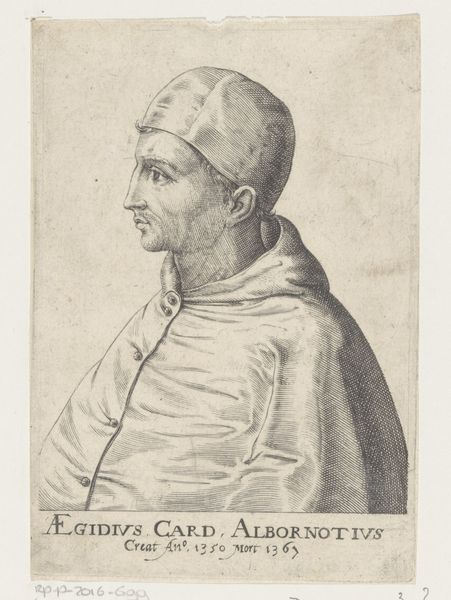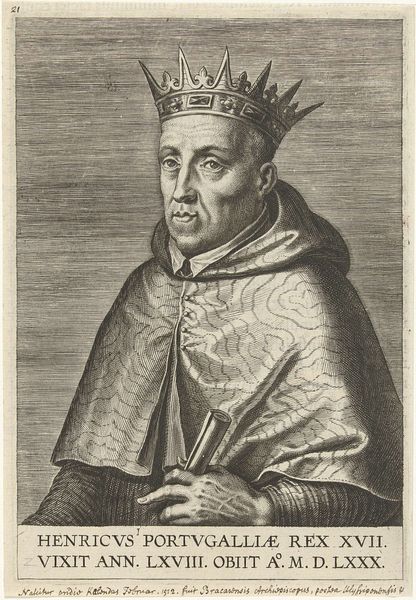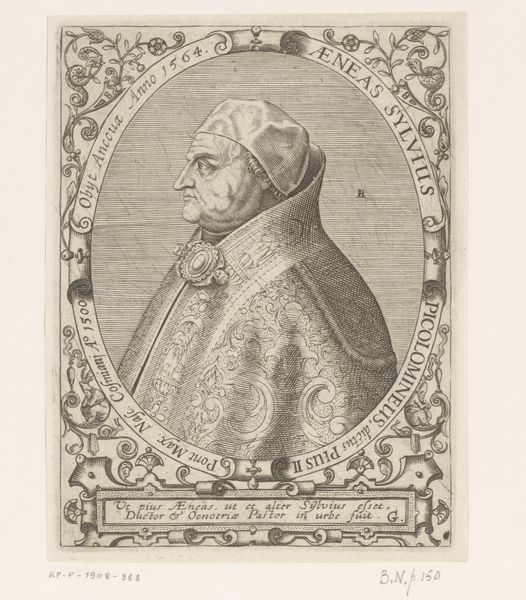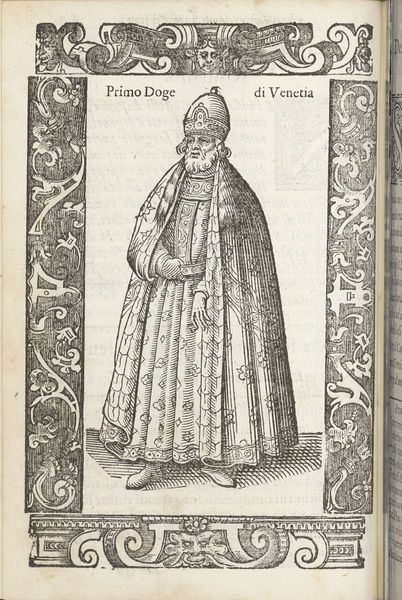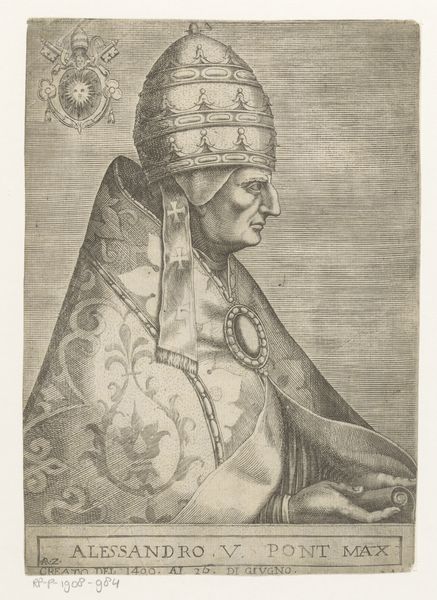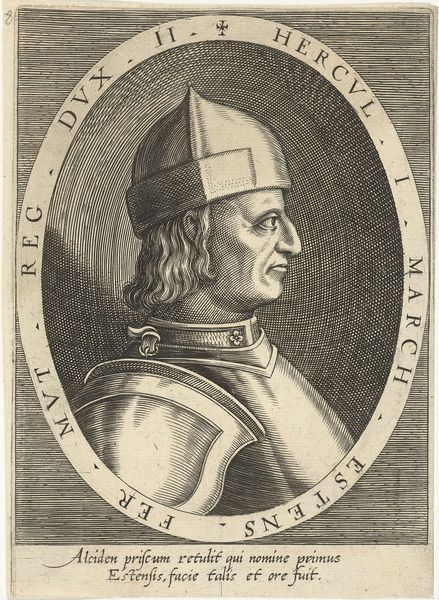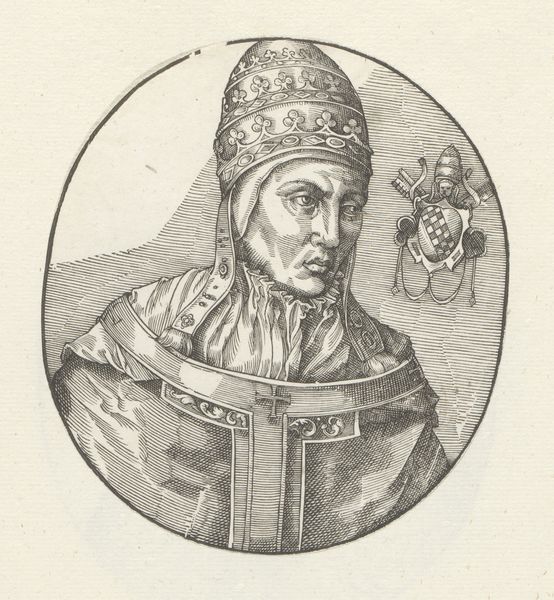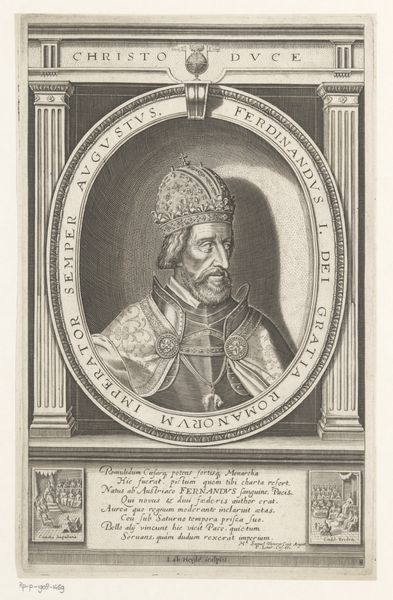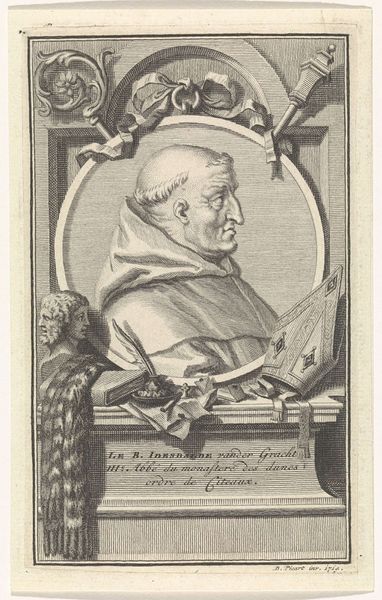
print, engraving
#
portrait
#
baroque
# print
#
old engraving style
#
11_renaissance
#
history-painting
#
academic-art
#
italian-renaissance
#
engraving
Dimensions: height 156 mm, width 109 mm
Copyright: Rijks Museum: Open Domain
Editor: We're looking at a print titled "Portret van paus Pius II," dating roughly from 1567 to 1662, currently held at the Rijksmuseum. The artist is unknown. The detail is incredible; the lines are so precise! It has such a solemn feel, a real sense of power. What do you see in this piece from a historical perspective? Curator: Well, it's important to consider the role of portraiture in the construction of power during this period. Prints like this one were often commissioned to disseminate the image of important figures and, importantly, to propagate specific interpretations of their rule and legacy. Editor: So, this image was less about capturing a likeness and more about conveying authority? Curator: Precisely! Notice the profile view. It lends a sense of Roman gravitas, echoing classical busts of emperors. How does this calculated visual strategy contribute to the construction of papal authority? Editor: I guess the visual association with emperors past might give him an immediate air of respectability and unquestioned power? Curator: Exactly. The very act of reproducing and distributing his image allows him to exert influence far beyond Rome. This speaks to the politics of imagery - how art served as a vital instrument in shaping public perception and reinforcing institutional power. This wasn't just art, it was strategic communication. Editor: It's amazing to think of a print like this having such a deliberate political function. Thanks! Curator: And thank you. Reflecting on the intent behind creating and circulating art is essential to understanding historical reception and, therefore, what art really is.
Comments
No comments
Be the first to comment and join the conversation on the ultimate creative platform.
